New to our blog and want to find out more about the project, how to volunteer with us or have a question? Visit our Facebook page, this website or contact us. All the details on how you can get in touch are at the top and bottom of every web page.
Responding to stoat sightings
With more folk out and about enjoying the long summer days we are seeing a massive increase in stoat sightings which are so vital to our trapping. This is also the time of year when young stoats start seeking territory away from their nursery dens.
Readers may already be familiar with the recent story of the stoat larder found at the Hatston Marine Services compound. In a true team effort between community and project, the dog team were able to uncover a stoat family den - the contents of which held over 100 voles and random bits of fowl stashed as a handy meal for a stoat family’s leaner times.
The photos show 1) progression from the main entrance to the den found in a crate at Hatston, 2) the bedding removed from the den lined with matted vole fur, 3) the grizzly remains of the stoat vole larder 4) there were remains throughout the den and here surrounded by stoat droppings 5) one layer of the den also had the remains of a bird surrounded by yet more stoat droppings.
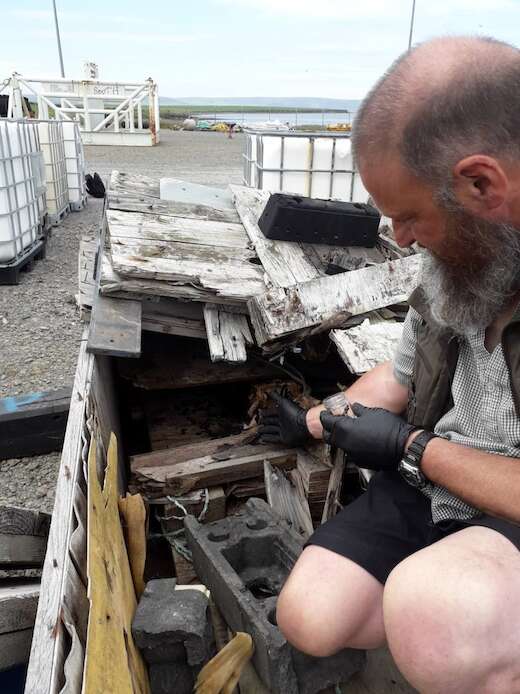
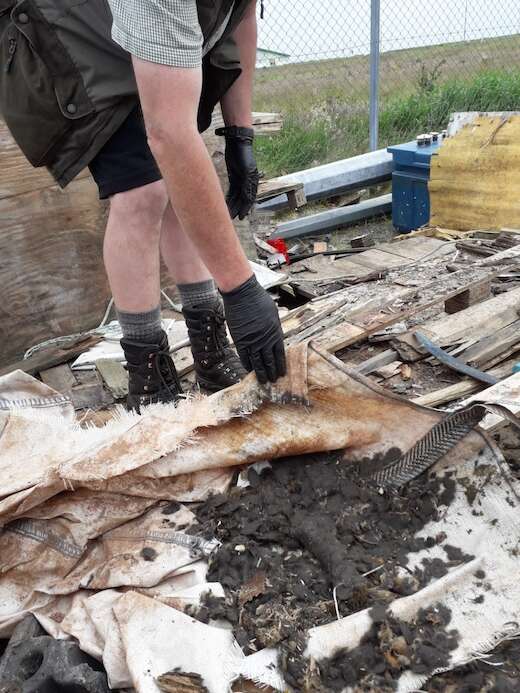
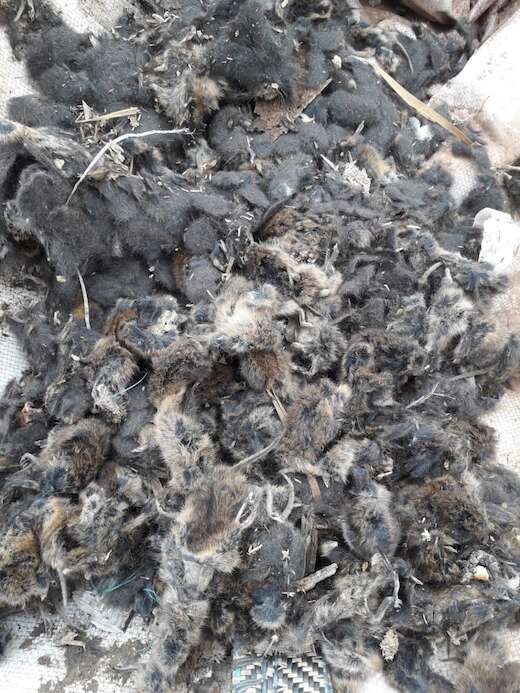
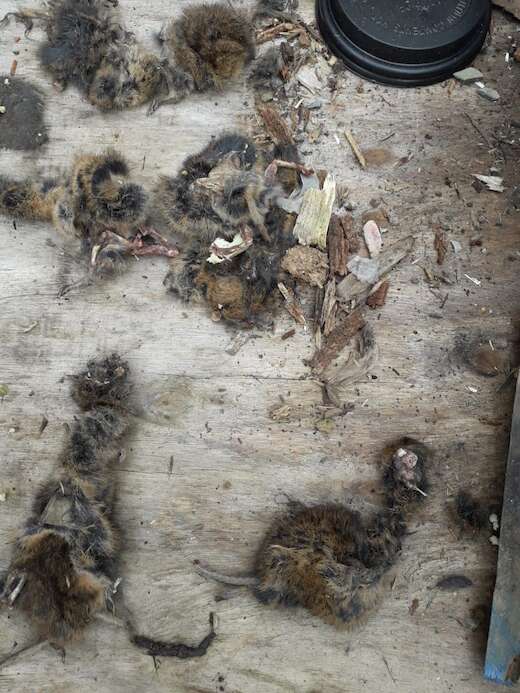
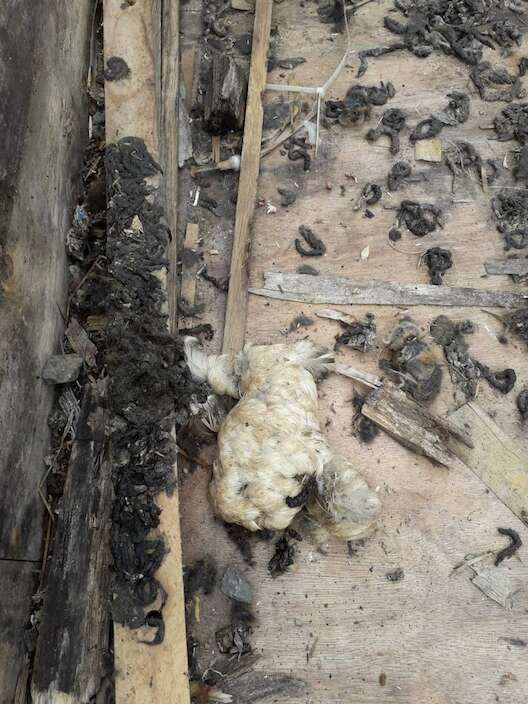
Folk continue to express their shock at the findings to us. It is a revelation to see the reality of such a larder and backs up the phrase ‘a picture paints a thousand words.’ To answer one often asked question, yes, the dens are that messy when you have a family of between 9-12 young all in one place. The tragedy of the stockpile of food is that it may never, ever be eaten. A stoat's metabolism means it needs to eat up to a third of their body weight daily. When feeding young, a female stoat could need to eat up to double her body weight each day.
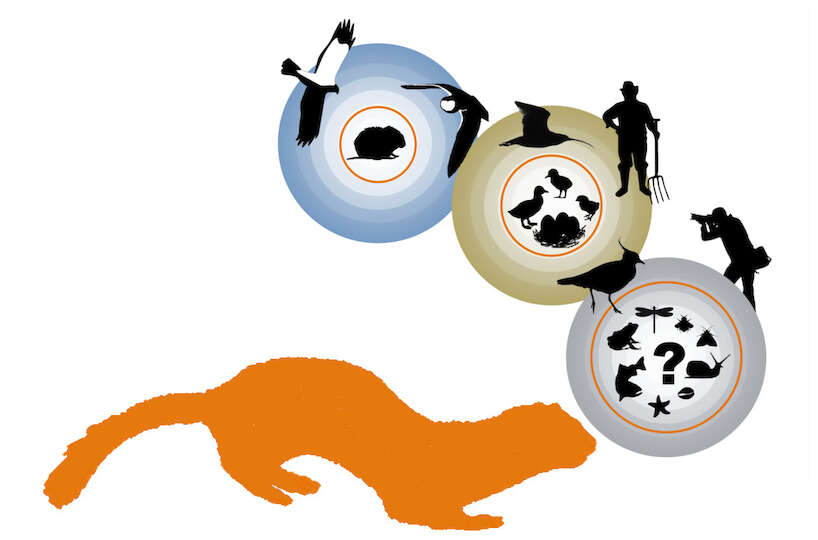
This need for food can lead to over-stocking, as seen at Hatston and which will be replicated by stoat families across Mainland Orkney. No-one would have considered stoats would adopt a builder’s crate for a home in preference to a burrow in moorland. But that crate at Hatston is located next to prime vole territory and is the equivalent of having a take-away on the corner.
These Orkney voles could help support Orkney’s native, iconic bird populations, hen harriers and short-eared owls being the prime example, without the added pressure the non-native invasive stoat has on food source in the mix.
Now everyone can report their sightings on this new website by simply filing in an easy form online. There is no need to join a social media group, or take time to phone us, as anyone can report where and when they see an Orkney stoat just by visiting our website on a smartphone, tablet or computer.
The details we need are just these – where, when and how many. The how many is crucial at this time of year as family groups are leaving their nests. That is effectively what happened over at Hatston Pier as various passers-by spotted the same stoat group emerging from their den and reported it to us.
Each sighting is triaged for urgency and the information is sent to the trapping pairs regularly covering each Mainland parish area. Those trap teams then adapt their trapping network where they have land access, responding directly to the useful information of stoat sightings that folk are sending into us.
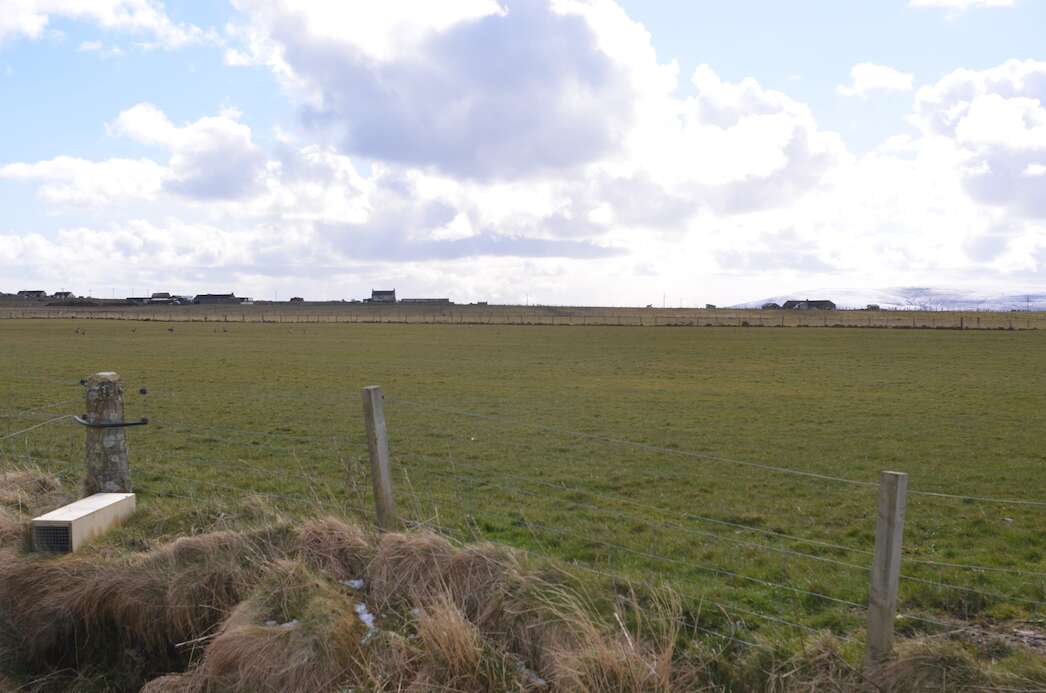
Those eyes on the ground - whether a visitor or resident out and about commuting, dog walking or enjoying Orkney’s very special native wildlife - are incredibly important to keep us updated on where stoats are across Mainland.
So, at the beginning of August 2021 those sightings have helped to contribute to the total of over 1,600 stoats being caught since the operational trapping began in August 2019. This was across 5,892 trap boxes in the field and 114,796 individual trap checks. Thanks to the community support that total will keep increasing as Europe's largest stoat eradication continues its job to project Orkney's native wildlife. Every report on our new website also automatically plots the location on the interactive map. You can zoom in and see where the stoats are in any neighbourhood in any year too.
Welcome additions to our team
We are delighted to build the team’s strength with some welcome and vital new recruits. Douggie Beaumont joins us as our Assistant Biosecurity Officer.
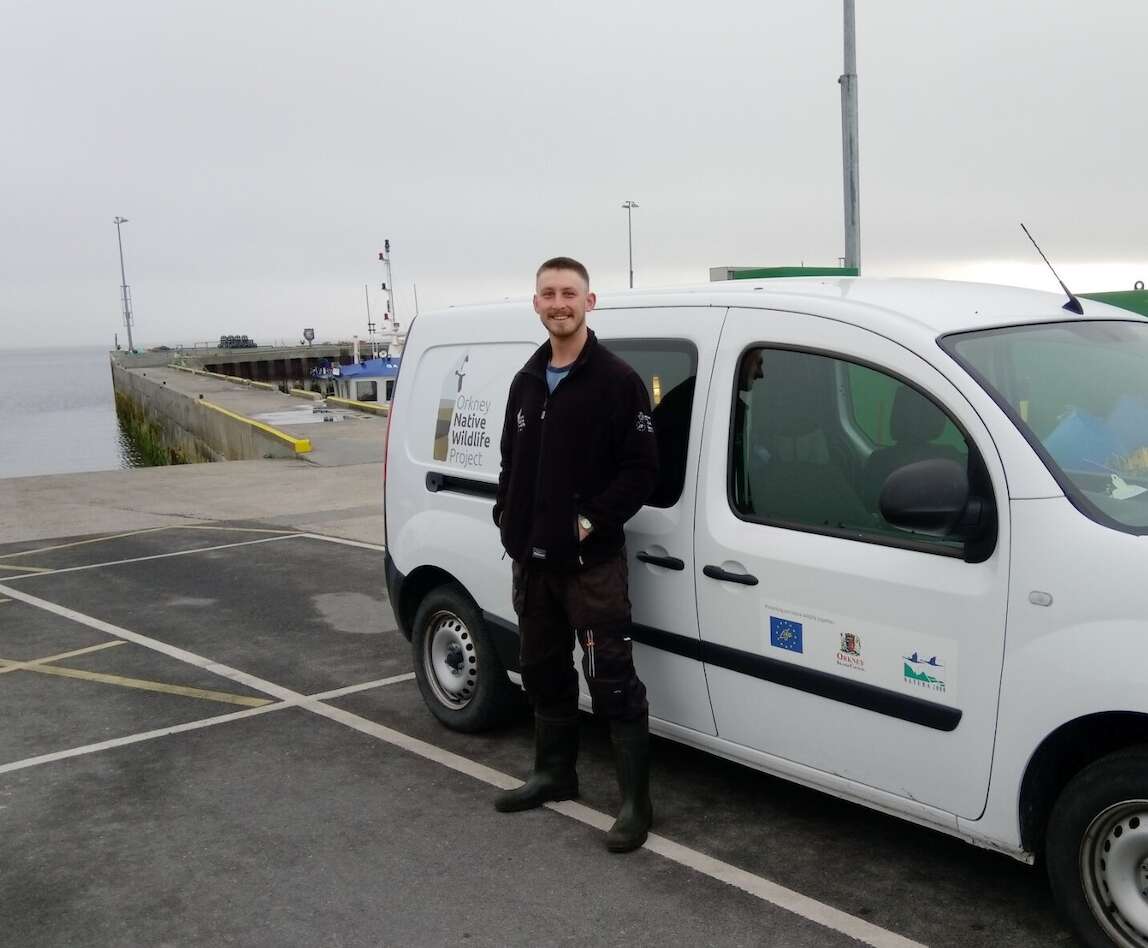
He is monitoring those isles nearest to Orkney Mainland within swimming distance of a stoat. You can read more about how this works on their section on their webpage. Stoats are incredibly strong swimmers and could easily colonise beyond the mainland. In New Zealand it has been proved that stoats can swim 3km easily, so Douggie is covering are all islands within that range: Rousay, Wyre, Eynhallow, Graemsay, Flotta, Shapinsay and Hoy and Walls.
It is vital to keep those islands stoat-free and help protect the native species thriving there. Thankfully there has been no confirmed evidence of stoats on the islands so far and Douggie’s efforts are to maintain that warning system with regular visits. He visits each island a few times a month, so if you see him walking about feel free to stop by for a chat and find out more! He is always happy to hear local perspectives and could easily talk your ears off if you are into rugby, music, food or birds. Douggie (pictured right) is already enjoying working out in the field and is best contacted on 07548154416.
Not only does Douggie like to be out and about in the island community, we also welcomed Tom Hadley who recently took up the pivotal role as project Community Liaison Officer.
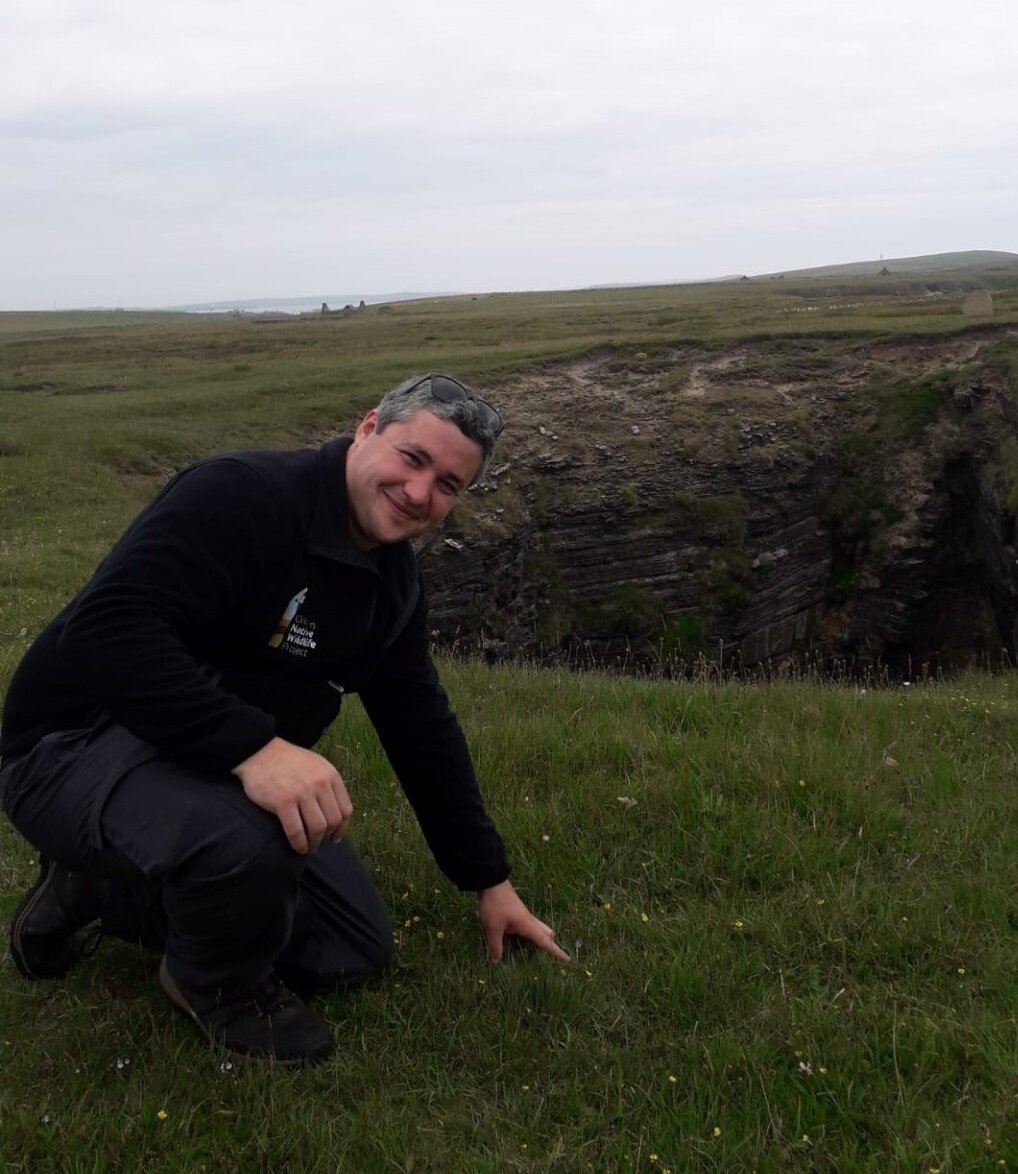
Environmental science is just one of Tom's many passions, so he was particularly thrilled to spot a rare and delicately formed Scottish primrose within weeks of starting his job on a recent visit to Hoy (left).
If you want to get involved and volunteer with us to help protect Orkney’s valuable native wildlife, or want a project talk to your community group then Tom is the man to contact.
He is looking forward to getting out and about and working with as many folk as possible, sharing his passion for wildlife and our work. He is particularly interested in native birds of prey and cetaceans (such as whales, dolphins and porpoises) so he was thrilled to have been able to spot a pod of orca within a few days of moving here from Moray.
Find out more about our community engagement programme, how to volunteer and even sign up for one of his project talks by contacting him directly on 01856 881449.
Sign up, sign up! New project blog newsletter
We would be super grateful if you could spread the word about our new website and encourage folk to sign up to our news' updates on how we are protecting Orkney’s unique native wildlife. You can scroll to the bottom of every page on our website to click subscribe to sign up to receive our regular blog. That way you will never miss a thing! We promise not to share your details either.
Until our next issue you can keep up with our progress via our Facebook page, our monthly column in the Orcadian newspaper and this blog. Any questions please feel free to check out our Frequently Asked Questions web page, contact us at [email protected] or telephone us on 01856 881451.

